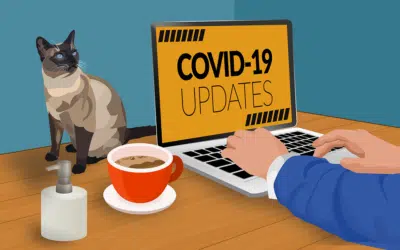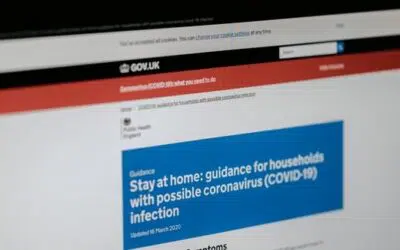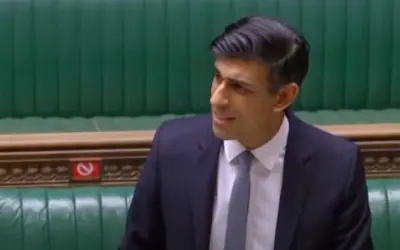Throughout this week, we have been advising several businesses how to go about the Coronavirus Job Retention Scheme, whilst awaiting more information on how the scheme would work. So far, many companies up and down the country have placed their employees on furlough. This is as more and more businesses close for a temporary period of time to help reduce the impact of Covid-19.
Late last night, further information on the rules of the scheme were announced. Furthermore, it’s broadly in line with the advice we’ve been giving this week. We wanted to share the latest guidance and hope to give clarity on some of the outstanding questions.
What we now know, is the scheme is expected to be up and running by the end of April. However, we still do not know how quickly you will be reimbursed following your claim.
Some points to note that that were published last night:
- Employees must be furloughed for a minimum of 3 weeks for a claim to be made.
- Employees must have been on your PAYE payroll on 28 February 2020.
- If an employee is working, but on reduced hours or for reduced pay, they will not be eligible for this scheme. In addition, you will have to continue paying the employee through your payroll and pay their salary subject to the terms of their employment contract. This is something that was not known, and we understand many businesses have already taken an approach such as this to avoid making redundancies.
- There is nothing in the guidance which prohibits rotating furlough leave amongst employees, provided each employee is off for a period of at least three weeks
- Employers can only claim once every three weeks, i.e. you cannot get weekly reimbursement. Claims can be backdated to 1 March 2020.
Here are some further details:
The Coronavirus Job Retention Scheme (CRJS) is a temporary scheme. It’s open to all UK employers for at least three months, from 1 March 2020.
Any UK organisation with employees can apply, including:
- Businesses
- Charities
- Recruitment Agencies (agency workers paid through PAYE)
- Public Authorities
The CJRS applies to designated affected employees on PAYE who are “furloughed” instead of being laid off.
- These employees include:
-
- Full-time employees
- Part-time employees
- Employees on agency contracts
- Employees on flexible or zero-hour contracts.
- Employers can apply to HMRC for a grant to cover wages for their employees, which will cover up to 80% of the salary costs of retained employees to a maximum of £2,500 each, plus(not including) the associated employer’s national insurance contributions and minimum automatic enrolment employer’s pension contributions.
- Employers do not have to top-up “furloughed workers” pay by 20% of the salary costs.
- The CJRS will be a grant and not a loan.
How to Apply for CJRS
- Applications for CJRS will be through an HRMC online portal. The aim is that this will be completed by the end of April 2020.
- Employees cannot work and be “furloughed” at the same time. However, “furloughed workers” can do volunteering or training, providing it does not generate any money for their employer.
- The CJRS applies to employees who were employed on 28 February 2020.
- The grants will be backdated to 1 March 2020.
- Employers must comply with employment law when designating employees as “furloughed workers” if they have a contractual lay off clause in their employment contracts. If this clause is not included, then employers will need to consult with employees.
- Holiday entitlement will continue to accrue while employees are “furloughed”.
- Contractual benefits will continue while employees are “furloughed” unless otherwise agreed.
- Pay for employees whose pay varies, if the employee has been employed for a full 12 months prior to the claim, the employer can claim the higher of either:
(a) The same month’s earnings in the previous year; or
(b) The average monthly earnings from the 2019-2020 tax year
- If the employee has been employed for less than a year, the employer can claim for an average of their monthly earnings since they started work.
- If the employee only started in February 2020, then a pro-rata calculation based on their earnings to date can be used.
- Employers can only submit one claim at least every 3 weeks, which is the minimum length an employee can be furloughed for.
To make a claim, employers will need:
- The ePAYE reference number
- The number of employees being furloughed
- The claim period (start and end date)
- Amount claimed (per the minimum length of furloughing of 3 weeks)
- The Employer’s bank account number and sort code
- Employer’s contact name
- Employer’s phone number
Once HMRC have received the claim and confirmed the employer is eligible for the grant, they will pay via BACS payment to the Company nominated UK bank account.
Employers must pay the employee all the grant received for their gross pay and should not deduct any fees for undertaking this.
This are unprecedented times and we will update you regarding this scheme, as and when further information becomes available.
The material is provided for general purposes only, for specific advice, pleases contact us to discuss your circumstances before you take any action.
There is nothing in the guidance which prevents your employee working for another organisation whilst they are furloughed, they just cannot work for you. We know some businesses are okay with their employees working part time elsewhere, but some are not, so you should adapt this to your own circumstances.
These are extremely difficult time for businesses and employees alike. If you have concerns about your business or your obligations and responsibilities as an employer at this time, we would be pleased to discuss these with you. Do not hesitate to contact our team below.
The link with the complete guidance can be located as follows:
https://www.gov.uk/guidance/claim-for-wage-costs-through-the-coronavirus-job-retention-scheme







